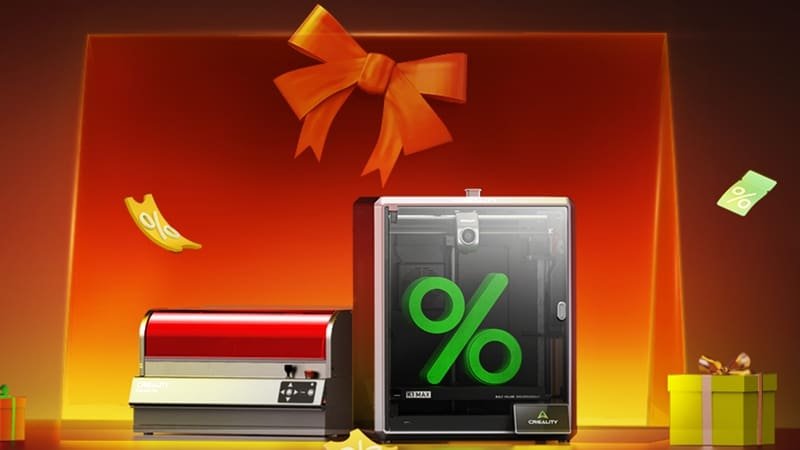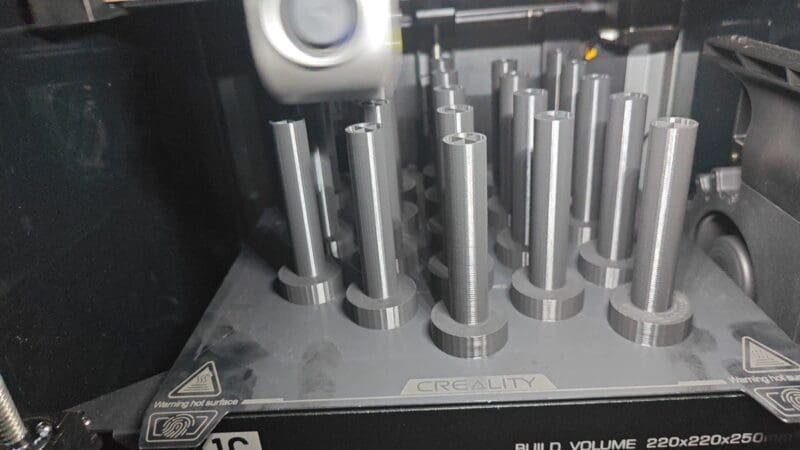PETG vs ABS: A Comprehensive Comparison

3D printing has revolutionized the way we create objects, and choosing the right filament material is crucial for achieving the desired results. PETG (Polyethylene Terephthalate Glycol-Modified) and ABS (Acrylonitrile Butadiene Styrene) are both widely used in the industry, each with its own unique characteristics and applications.
In today’s comparison, we’ll explore the key differences between PETG and ABS, helping you make informed decisions for your 3D printing projects. We’ll discuss their printing properties, such as ease of printing and post-processing requirements. We’ll also examine their strength and durability, chemical resistance, and environmental impact.
Whether you’re a hobbyist, professional, or somewhere in between, understanding the nuances of PETG and ABS will empower you to choose the right material for your specific needs.

PETG vs ABS: Printing Considerations
Easy to Print
PETG is known for its ease of printing, making it a favorite among beginners and experienced users alike. Unlike ABS, PETG does not require a heated bed, making it more accessible for those who may not have the necessary equipment. It also boasts excellent layer adhesion, resulting in smoother and more precise prints. PETG has low shrinkage, reducing the risk of warping during the printing process.
On the other hand, ABS presents some challenges in the printing department. It has a higher tendency to warp and shrink, requiring a heated bed to maintain a consistent temperature throughout the print. An enclosure is also recommended to prevent heat loss and enhance layer adhesion. Despite these challenges, ABS can still deliver strong and durable prints with the right settings and equipment.
Printing Speed
When it comes to printing speed, PETG has the advantage of faster printing compared to ABS. Its lower printing temperature allows for rapid layer solidification, enabling quicker print times. ABS, on the other hand, requires a higher temperature for better layer adhesion and cooling between layers, resulting in a more precise print.
Post-processing techniques
Post-processing techniques also differ between PETG and ABS. PETG can be easily sanded and polished to achieve a smooth and glossy finish. It can also be painted with acrylic paints, adding vibrant colors to your prints. ABS, on the other hand, requires more extensive post-processing, including chemical smoothing to reduce visible layer lines and achieve a professional finish.
PETG vs ABS: Strength and Durability
When it comes to strength and durability, both PETG and ABS have their unique advantages. PETG filament is known for its excellent impact resistance, making it highly durable and less prone to cracking or breaking compared to other filaments. This makes PETG a great choice for parts that need to withstand significant stress and strain. Whether it’s functional prototypes or mechanical components, PETG can handle the demands of various applications. Its strong layer adhesion ensures that the printed parts maintain their structural integrity even under heavy use.
On the other hand, ABS filament is renowned for its strength and rigidity. It can withstand higher temperatures compared to PLA filament, making it suitable for parts that require dimensional stability and high mechanical strength. ABS is often used in industries such as automotive and aerospace, where parts need to withstand extreme conditions. Its excellent mechanical properties make it ideal for functional parts and prototypes that require long-lasting durability.
Both PETG and ABS offer reliable strength and durability, but they excel in different areas. PETG’s impact resistance and strong layer adhesion make it a great choice for applications that require toughness and flexibility. ABS, on the other hand, is known for its rigidity and temperature resistance, making it perfect for parts that need to withstand high temperatures and mechanical stress.
When choosing between PETG and ABS for your 3D printing projects, consider the specific requirements of your application and the properties that are most important to you. Whether it’s impact resistance, rigidity, or temperature resistance, both PETG and ABS can deliver the strength and durability you need.
PETG vs ABS: Chemical Resistance
When it comes to chemical resistance, PETG and ABS have distinct properties that make them suitable for different applications.PETG, or Polyethylene Terephthalate Glycol, offers exceptional resistance to a wide range of chemicals. This makes it an excellent choice for applications that require exposure to various substances, such as containers for food and medical devices. PETG’s ability to withstand chemicals also makes it a reliable option for outdoor use, as it is more resistant to UV light compared to ABS. This means that PETG can maintain its structural integrity and appearance even when exposed to sunlight for extended periods.
On the other hand, ABS, or Acrylonitrile Butadiene Styrene, has certain limitations when it comes to chemical resistance. While ABS is a versatile material suitable for many applications, it is more susceptible to chemical degradation compared to PETG. This restricts its use in applications that require exposure to harsh chemicals or corrosive substances.
PETG vs ABS: Cost Comparison
Cost is one of the most important factors when we are choosing filaments. While ABS is generally more affordable than PETG, the price difference can vary depending on the brand and quality of the filament.
ABS is widely available and widely used, which contributes to its lower cost. This makes it a cost-effective option for many 3D printing projects. A one-kilogram spool of ABS filament typically costs around $20, making it an attractive choice for those on a budget.
PETG tends to be slightly more expensive than ABS. The higher cost of PETG can be attributed to its specialty status and the more advanced manufacturing processes involved in its production. A one-kilogram spool of PETG filament usually ranges around $30.
It’s important to note that the cost of filaments can vary depending on the manufacturer, brand reputation, and additional features or certifications offered. While ABS may be more affordable, PETG’s superior properties and durability may justify the higher price for certain applications.
Top 5 PETG 3D Printing Filament & ABS Filaments
Here we listed the top 5 best sellers of PETG and ABS filament on Amazon in a live ranking.
PETG 3D Printing Filament
- 【Creality CR-PETG Filament】Creality CR-PETG…
- 【Toughness-enhanced PETG】 Creality PETG choose…
- 【Tangle-Free & Neatly Wound】We ensure that…
- 【No Clogging & No Bubbles】Our filaments are…
- 【High Precision & Consistent Performance】Our…
- TOUGH AND DURABLE: ELEGOO PETG filament combines…
- EASY AND SMOOTH PRINTING: PETG offers a smooth…
- CONSISTENT & LESS-TANGLE: Diameter accuracy of +/-…
- CLOG-FREE & BUBBLE-FREE: Complete dried before…
- WIDE COMPATIBILITY: Universal compatibility with…
- Comprehensive Filament Bundle for Diverse Projects…
- ROBUST AND DURABLE: JAYO PETG filament combines…
- HIGH TRANSPARENCY: The PETG filament offers…
- MORE FILAMENT, MORE VALUE: JAYO PETG filament…
- NO CLOGS, NO BUBBLES: Our PETG filament has a…
- 【Stronger Than PLA, Easier Than ABS!】Tired of…
- 【Built for Real-World Challenges!】Need a…
- 【No More Tangles, No More Headaches!】Say…
- 【Vibrant Colors, Endless Possibilities!】…
- 【Risk-Free & Lifetime Service】 Discover…
- ①【PETG Filament 1.75mm】SUNLU PETG 3D Printer…
- ②【Excellent Layer Adhesion】PETG filament…
- ③【Enhanced Toughness】Known for its…
- ④【High Impact Strength】With its high impact…
- ⑤【Robust Durability】PETG prints are robust…
ABS 3D Printing Filament
- Engineering Filament: CR-ABS has excellent impact…
- Good result of printing: Compared with ordinary…
- Non-toxic & compatibility: In the process of…
- Good physical performance: Tough, hard, rigid, no…
- Creality Support: Creality provides 12-month & 24…
- 🌡️ Impact and Heat Resistant: PolyLite 1.75mm…
- 🛠️ Enhanced Stability: PolyLite 1.75mm ABS 3D…
- 🔒 Moisture-Free: Polymaker 1.75mm ABS 3D…
- ♻️ Cardboard Spool: Available in upgraded 3.0…
- ⚠️ Important Note: Pass the ABS 3D printing…
- Stronghero3D PLA 3D Printer Filament Tri color…
- 【Exceptional Heat Resistance】Overture3d ABS 3D…
- 【Glossy Surface Finish】Achieve a professional…
- 【Dimensional Accuracy & Consistency】Advanced…
- 【More Humanized Design & Easy to Use】 Grid…
- 【Risk-Free & Lifetime Service】 Discover…
- 【ABS+ Filament】ABS+ is an enhanced version of…
- 【Stable Dimensional Tolerance】Minimum…
- 【Tangle Free & No Plugging】Total Length:…
- 【High Compatibility】Strong and durable ABS+…
- 【Vacuumed Sealed Packaging】Filament Net…
PETG vs ABS: Environmental Impact
When considering the environmental impact of PETG and ABS, it is important to take into account their production, use, and disposal. Both materials are derived from oil, which is a non-renewable resource. However, there are some differences in their environmental characteristics.
PETG, being a modified version of PET, is considered more environmentally friendly compared to ABS. It is 100% recyclable, which means that waste PETG prints can be melted down and reused to create new prints. This recyclability reduces the amount of plastic waste that ends up in landfills or oceans. Additionally, PETG is resistant to UV rays and high temperatures, making it suitable for outdoor applications and reducing the need for frequent replacement.
On the other hand, ABS is not recyclable and does not biodegrade easily. This means that ABS prints will persist in the environment for a long time, contributing to plastic waste. ABS also emits strong fumes during the printing process, which can be harmful to human health and the environment if not properly ventilated.
To mitigate the environmental impact of both PETG and ABS, it is important to follow sustainable practices. This includes recycling PETG prints whenever possible and ensuring proper ventilation when printing with ABS to minimize fume emissions. Additionally, choosing a filament supplier that prioritizes sustainability and uses eco-friendly manufacturing processes can further reduce the environmental footprint of 3D printing.

Conclusion
Overall, both PETG and ABS have their strengths and considerations, and the choice between the two ultimately depends on your specific needs and preferences. Whether you prioritize ease of printing, strength and durability, chemical resistance, or environmental impact, understanding the properties and characteristics of PETG and ABS will help you make the right decision for your 3D printing projects.
DISCLOSURE: THIS POST MAY CONTAIN AFFILIATE LINKS, MEANING I GET A COMMISSION IF you DECIDE TO MAKE A PURCHASE THROUGH MY LINKS, AT NO COST TO YOU. PLEASE READ MY DISCLOSURE FOR MORE INFO.













